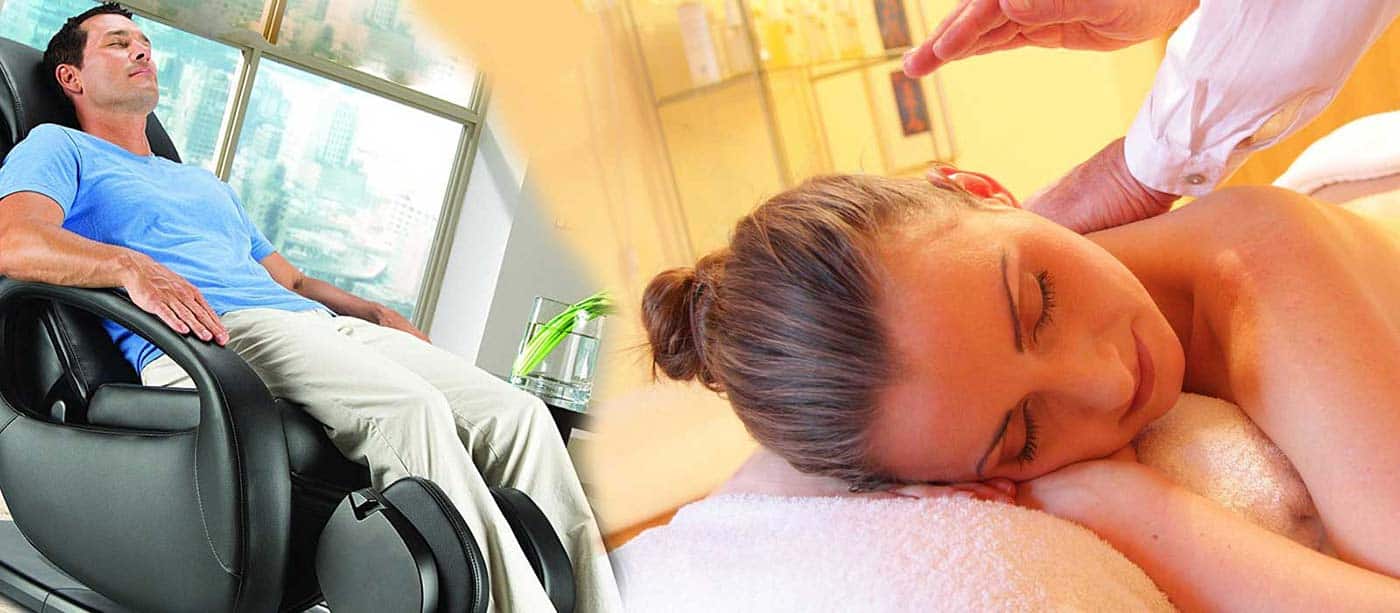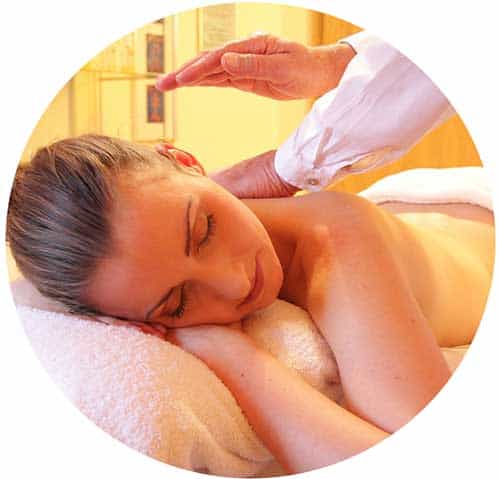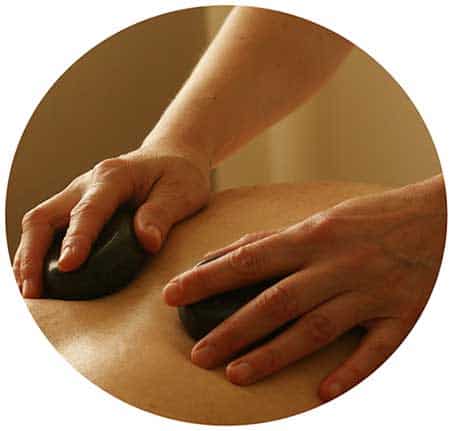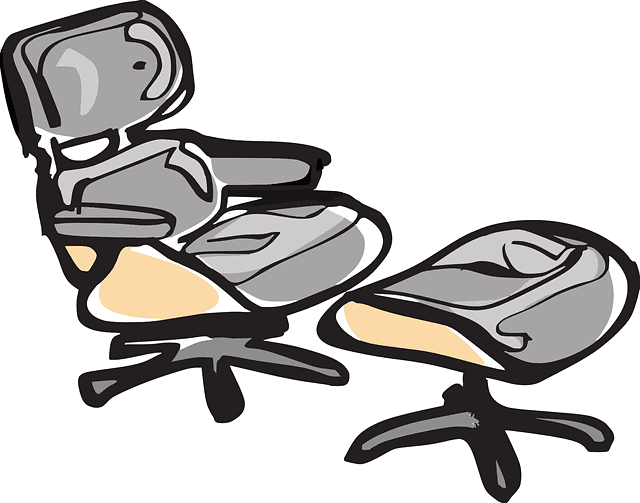
If you’re considering investing in a massage chair you may be wondering, does it actually compare to a massage therapist? In this massage chair vs real massage article, we’re walking you through the differences between a massage from a chair and a therapist. We’ll see which is better and whether or not a massage chair is worth it.
What’s the Difference: Massage Chair vs Real Massage
Massages from a chair and a masseuse each have their own benefits. Yes, a massage chair is mechanical, but its technology has come a long way since its introduction in the 1950s.
Today, many massage chairs are FDA-approved medical devices and are recognized by organizations like the American Chiropractic Association (ACA) as being credible supplements to chiropractic therapy. Although, not every massage chair delivers a quality therapeutic massage and there are a lot of knock-offs out there.
However, if you’re willing to invest in a high-quality massage chair that’s demonstrated its effectiveness and is from a reputable brand, you might be surprised at how well it performs.
That said, a massage chair is not a human and there are some things machines can never replicate, which bring us to our first difference.
Human Touch

Perhaps the most noticeable difference between a massage chair and a masseuse is human touch. Human touch has therapeutic benefits in and of itself. According to the Touch Research Institute at the University of Miami School of Medicine, touch, like what you receive during massage therapy, has been shown to have many positive benefits that extend across all life stages. This includes “enhanced attentiveness, alleviation of depression symptoms, pain reduction, stress hormone reduction, and increased immune function.”
But what if you feel uncomfortable with a massage therapist touching you?
Privacy
The privacy of a massage chair is a big draw for people who want to enjoy a massage but aren’t keen on being touched by someone they don’t really know (like a masseuse). Or, those who suffer from health issues like sciatic nerve pain that requires treatment of their glutes which they may not want a person to touch.
With a massage chair, you have total privacy — helping people who might not otherwise get massage have a treatment option. On the other hand, some people are very comfortable getting a massage from a professional masseuse.
Consistency

Another major difference between massage chair vs real massage is consistency. By default, a massage chair is consistent because its movements are programmed into the chair — it’s a robot. When you sit in a massage chair and get a massage, you know the next time you sit in that massage chair you’re going to get the same massage.
A human, on the other hand, isn’t as consistent. And perhaps the only truly negative aspect of a real massage is the chance of getting an ill-experienced masseur or masseuse.
Unless you have an ongoing relationship with a massage therapist and have worked with him repeatedly, you may find choosing a massage therapist is nerve-racking. Also, getting a bad or painful massage is downright stressful — so long positive effects!
But a massage therapist’s inconsistency isn’t always negative. For example, a massage therapist can manipulate and customize their movements to give you a tailored treatment based on your exact needs. Maybe you’ll ask her to apply more pressure around your neck or spend more time focusing on a head massage. A therapist can make adjustments a massage chair simply can’t.

Customizability
The ability for a massage therapist to customize her treatment is perhaps the most compelling case for human-powered massage. A massage therapist can assess her client’s need on a case-by-case basis. So while a massage chair may have six massage techniques, a massage therapist may have a hundred.
A massage chair has programs and manual options that let you adjust settings like intensity and location. Meanwhile, a massage therapist uses her expertise to inform which techniques to use, when, and with how much pressure to apply — constantly adjusting as she receives feedback from her client. This dynamic nature of a real massage just can’t be replicated. But that doesn’t mean massage chair manufacturers aren’t trying to.
Today, many massage chairs offer body scanning that maps your back to detect your height, shape, and (if it uses advanced technology) pressure points before automatically adjusting its rollers to give you a custom-fit massage.
Massage roller technology is also advancing with many massage chairs offering 3D and 4D massages. With 3D massage, the rollers not only move up and down and side to side but inward, applying pressure for deep tissue massage. While with 4D massage, the rollers have an additional movement: rhythm. Rhythm alternates the speed of the rollers — sometimes slow, sometimes fast — to simulate the dynamic speeds or rhythms you might experience with a masseuse.
Massage Coverage

Another significant difference between a massage chair vs real massage is coverage.
A massage chair’s coverage is limited. A massage chair can only massage in places it has massage components, most commonly the neck and back. However, the introduction of air massage technology has tremendously changed the areas massage chairs can treat. Today, many massage chairs (in all price ranges) use airbags to treat the sides of the shoulders, hips, lower back, thighs, buttock, arms, hands, calves, and feet.
Airbags typically provide compression massage by inflating and deflating to squeeze an area. But many massage chairs incorporate advanced air massage technology that uses the airbags in chorus with other massage chair components to deliver an even more comprehensive massage.
For example, it’s common to see massage chairs offer full-body stretch programs that use airbags to hold the legs and feet in place while the chair reclines to stretch the spine. Or, to see programs where airbags in the seat and hips inflate at varying intervals to gently swing and twist the lower body.
But even though airbags have made a comprehensive massage chair massage possible, it still pales in comparison to what a massage therapist can do. A massage therapist’s coverage isn’t limited — they can massage the front and back of your body from head to toe. If you have a small area on the side of your neck that’s causing you pain, a massage therapist can easily reach it and treat it. A massage chair, on the other hand, may or may not be able to.
Cost

Both a massage from a chair and a therapist are going to cost you, but how much can vary widely. Massage chairs can cost anywhere from a few hundred dollars to over $10,000. But to get a high-quality, comprehensive therapeutic massage chair, you can expect to pay at least $3,000.
On the other hand, the average cost for a 60-minute massage from a therapist is $60 to $120. Of course, it can be more expensive depending on where you live and the type of massage you’re getting.
Now, let’s consider the cost over time.
Let’s say you want to get a high-end ACA-endorsed full-body massage chair like the Panasonic EP MA73. It will cost you around $8,000 — it’s the most expensive Panasonic massage chair — depending on the retailer you buy it from.
At $8,000, if you used your massage chair every day for three years (the length of Panasonic’s standard warranty), you’d be spending a little over $7 per day. If you and a spouse both use the massage chair, you’d be spending $3.60 per person per day.
If you extended your warranty to five years, you’d be spending a little over $4 per day. For two people, you’d be spending $2 per person per day. And that’s only if you use your massage chair for five years. High-quality brands like Inada, Panasonic, and others have been known to last for 10 years or more.
Now, let’s compare that to massage therapy costs.
Using the massage therapy price range above, let’s say the median cost is $100 per massage including tip. To spend $8,000 on massage therapy over five years, you’d need to have two to three massages per month (80 total over a five-year period). Though after you hit the $8,000 mark, you’d still have to spend money on massage therapy if you wanted to continue getting monthly massages.
If you have chronic pain or stress, two or three massages a month may not be enough. On the other hand, if you have flare-ups of pain or simply enjoy getting a massage from time to time, two or three massages a year may be all you want or need. So cost really comes down to what you want your massage regimen to be like. It’s either massages anytime you want with a chair, or massages with a professional a few times a month.

Time
Like we touched on above, with a massage chair, a “mechanical masseuse” is available 24 hours a day, 7 days a week. You don’t have to drive anywhere, squeeze time in your busy schedule, or make an appointment. However, a massage with a therapist requires an appointment, travel to the office, and sometimes massage supplies — if your therapist comes to your home.
And what happens if you wake up in the middle of the night with back pain? We’re not aware of many massage therapists who make middle-of-the-night house calls. But if you have a massage chair, you’re always a few feet away from treatment.
On the other hand, many people like getting out of the house and going to the spa or wellness center. It’s an experience that can enhance the overall enjoyment of your massage. Plus, massage therapy clinics tend to have relaxing music, aromatherapy, warm towels, oils, and other kinds of relaxation-enhancing benefits. Not to say you can’t put on some relaxing music and light aromatherapy candles while enjoying a chair massage.
Health Benefits

There’s no doubt massage therapy offers health benefits. But does a chair massage offer the same benefits as a human massage?
There have been many studies that demonstrate the effectiveness of massage therapy. While there haven’t been nearly as many studies about massage chairs, in general, massage therapy and massage chairs are both known to reduce pain, muscle tension, stress, and a myriad of other stress-related problems like high blood pressure and anxiety.
But like we mentioned at the beginning of our article, human touch itself has health benefits that a massage chair can’t replicate, for example, it can produce feelings of connection and comfort.
However, a massage chair’s mechanical movements can offer benefits of their own. For example, reclining in a massage chair can help align your spine and reduce pressure on your nerves. And many massage chairs today take the benefits of reclining further with Zero Gravity recline.
Zero Gravity puts the body into a neutral position such that its weight is evenly distributed across the backrest and the legs are slightly elevated above the heart. This NASA-inspired position removes vertical pressure from the spine, which helps the muscles in the neck and back relax and the vertebrae in the spine to decompress. Thus, promoting better circulation and proper posture.
Both a massage from a human and a chair can trigger the secretion of endorphins, which reduces the body’s perception of pain and the effects of stress, plus creates a feeling of well-being and can enhance immunity.
Which is Better: Massage Chair vs Massage Therapist
So now that we’ve covered the differences between a massage chair vs massage therapist, it’s time to ask: Which is better?
That’s a tough question to answer simply because they’re so different.
With a massage therapist, you’re working with a real human that can respond to your treatment needs at the moment and use their expertise to customize your massage in ways a massage chair never could. But getting a massage from a therapist can be time-consuming and difficult to fit into a busy schedule. And of course, there’s also the chance you’ll get a good massage from one therapist and a not-so-good massage from another.
With a massage chair, your massage is limited to what’s programmed on the chair. If you’re experiencing muscle tension on the top of your shoulder but your massage chair doesn’t offer a great trapezius massage, you’re out of luck. But if you know the type of massage you want, where on your body you want it, and choose the best massage chair for those specific needs, you’ll have 24-hour access to your personal mechanical masseuse and in the privacy of your own home.
Of course, no one said you couldn’t have both a massage chair and a massage therapist. So back to the question, which is better?
The answer is, whichever most accurately fits your personal treatment needs.
Massage from a Massage Chair
Pros
Cons

Massage from a Massage Therapist
Pros
Cons

Massage Chair vs Real Massage Final Thoughts
While both a therapist and a massage chair can deliver a massage, they’re entirely different. Each has their own set of benefits and shortcomings. But the more you know your own preferences and treatment needs, the better off you’ll be choosing which is the best option for you. And when that time comes, we hope our guide to massage chair vs real massage helps make your decision process a little easier.